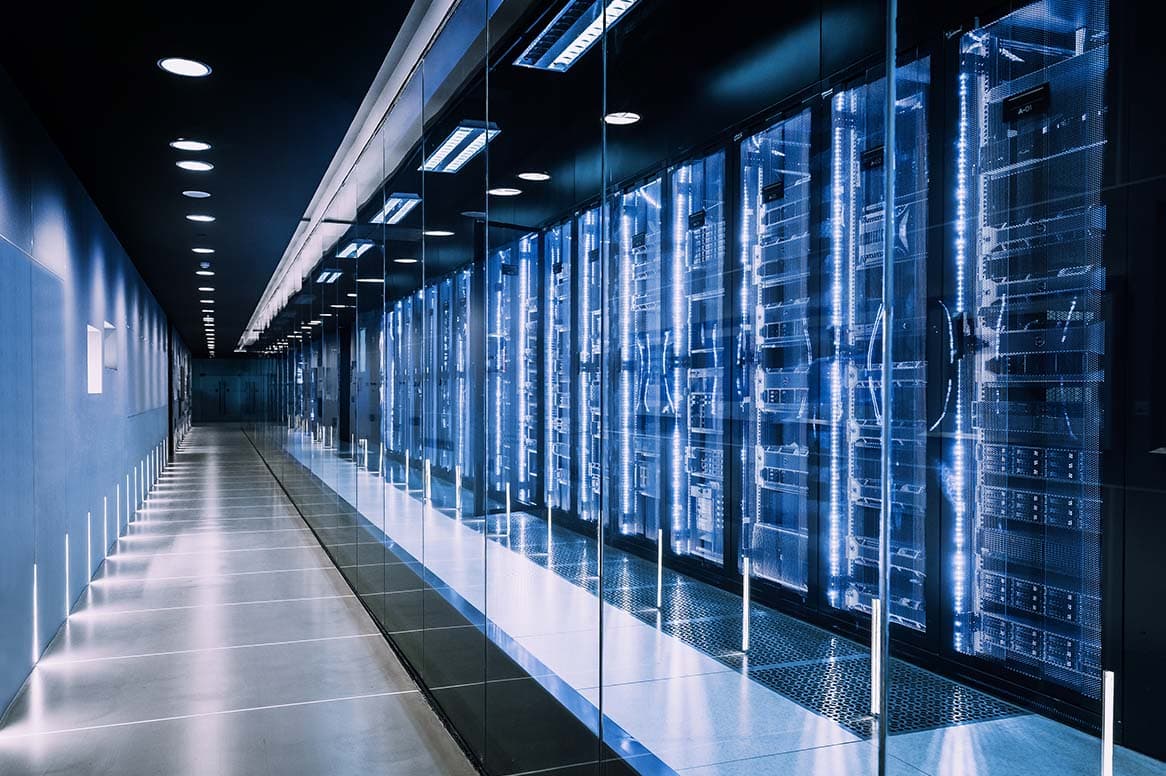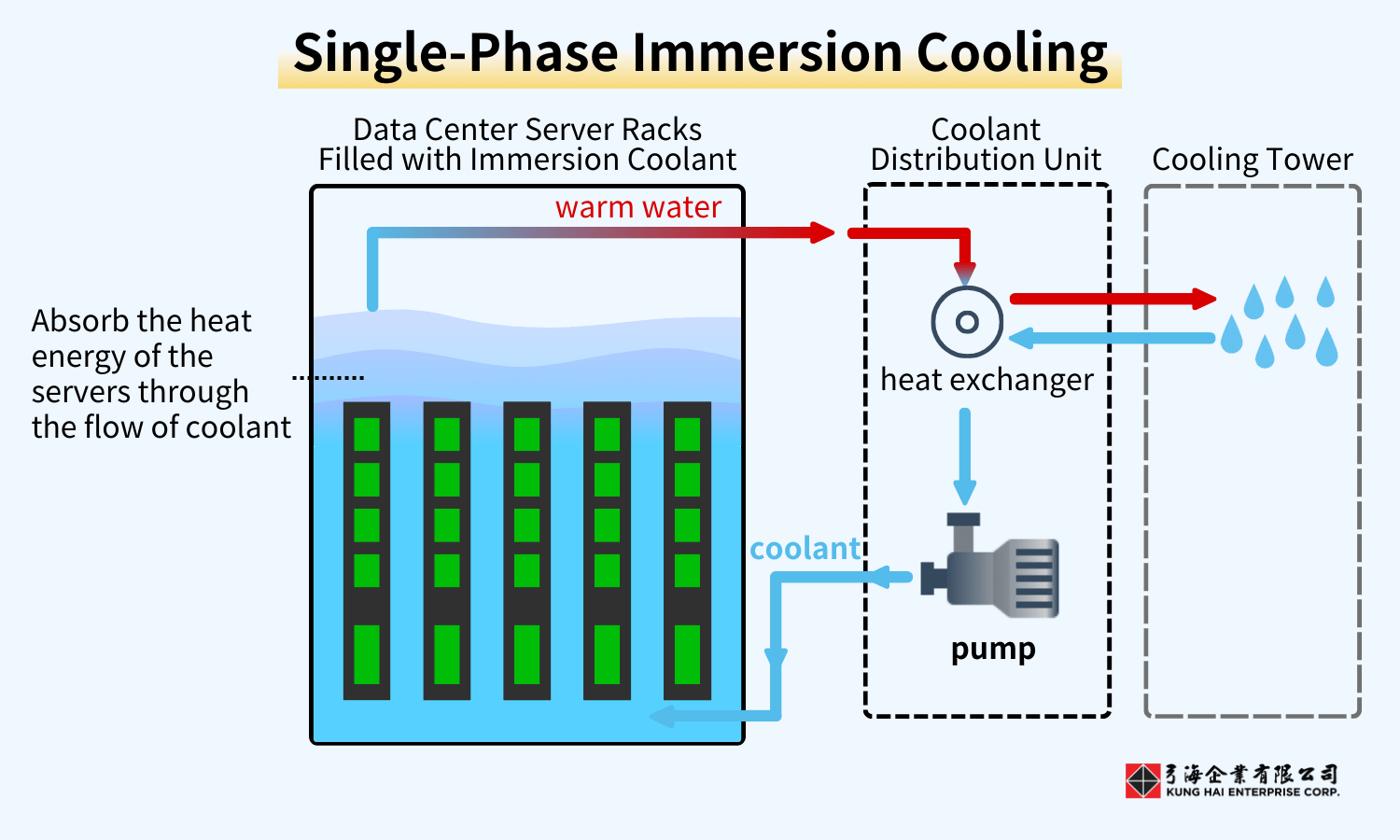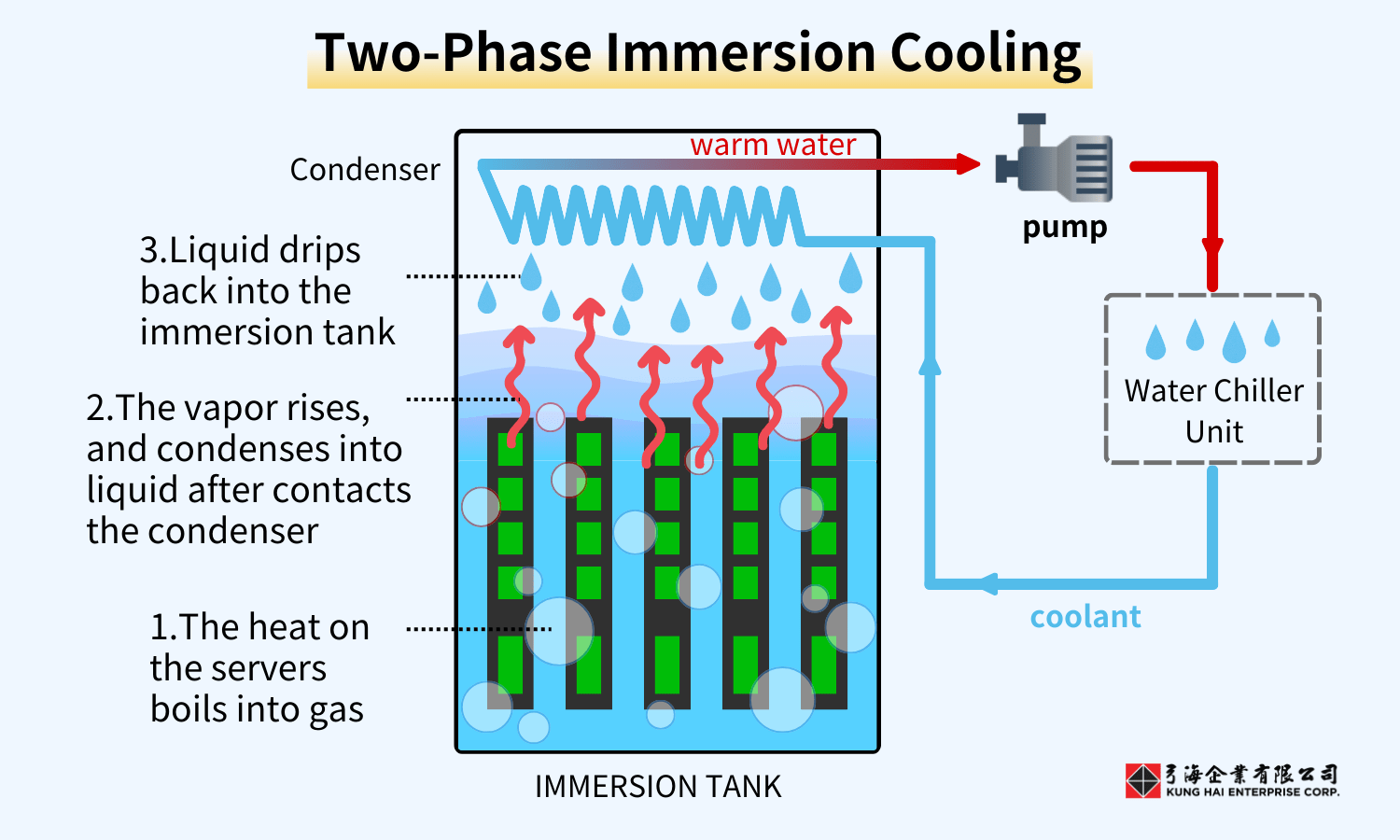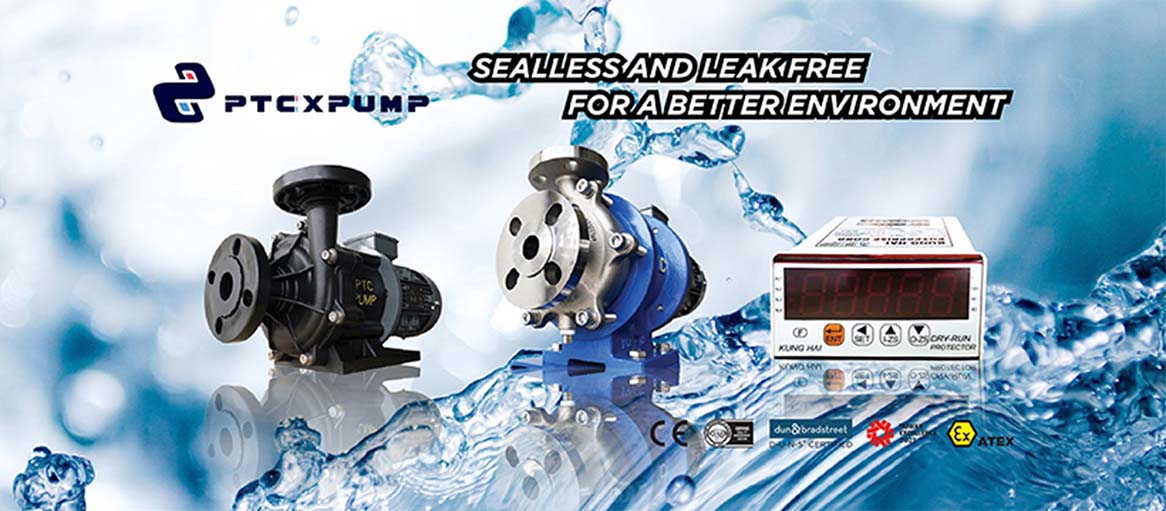
How Can Liquid Cooling Solutions Bring a New Revolution In Cooling for AI Technology?
The innovative application of artificial intelligence (AI) technology is bringing disruptive changes to various fields and creating new possibilities for operating models and development prospects. The powerful processing power required behind the rapidly growing AI wave also poses new challenges to the cooling requirements of servers.
As the demand for the application of AI technology increases significantly, data centers must process more data at a faster speed, thus driving the transformation of cooling architecture. Traditional air cooling systems (such as fans or refrigerated air conditioners) can no longer cope with the huge heat generated by high-density computing. Liquid-cooled server racks have emerged in recent years and become an innovative solution for this problem.
When the server is performing deep learning and data analysis, the huge amount of data and complex processes will generate huge amounts of heat. The liquid cooling system can quickly and effectively remove this heat to ensure that the server can maintain stable operation. The emergence of liquid-cooled server cabinets provides strong support for the development of AI technology; as AI becomes a trending topic this year, “immersion cooling” has attracted widespread attention for its excellent heat dissipation performance, which also means that liquid-cooled server cabinets are leading us to welcome the first year of liquid cooling.
Cooling Challenges For AI Servers in The Face of Increasing Processing Demands
The importance of server cooling for equipment stability
When we use computers or mobile phones, we often feel heat. That is because the central processing unit (CPU) and other electronic parts inside the device generate heat when working. If this waste heat cannot be effectively discharged, it will affect the performance and life of electronic components. In particular, AI servers have stronger processing power and larger storage space than ordinary servers and generate relatively more heat.
To ensure that AI servers can continue to provide high computing power, these large-scale AI data centers must use effective heat dissipation architecture to cool down the chips.

Limitations of Traditional Air Cooling Systems: Unable To Handle The Heat Of Intensive Workloads
At this stage, the traditional air-cooling system is still the most common cooling method in server racks. It uses air as a heat dissipation medium, blowing cold air into the heat dissipation fins through a fan, performing air circulation, and taking away the heat generated by the server by heat convection.
However, the heat dissipation effect of traditional air cooling is limited.
- Limited heat dissipation capacity: Air is a medium with poor heat conductivity and can only absorb limited heat. Once it reaches saturation, its heat dissipation efficiency will be limited. Especially in high density server racks, where a large number of servers are placed in a limited space, overheating issues are more likely to occur.
- Noisy: Because the fans need to run at high speeds to circulate enough air to cool the servers, this creates mechanical noise that can cause interference.
- Low efficiency: If you want enough airflow to cool a large amount of heat, a large space is required. Overall, the efficiency of the traditional air-cooled system is low.
As server processing demands continue to increase, many high-specification servers have approached or exceeded the heat dissipation limit that air-cooling systems can provide. We must use liquid cooling technology to overcome the challenges of low efficiency and increased energy consumption faced by traditional air-cooled heat dissipation architecture.
Advantages of Liquid Cooling Technology and Application of Sealless Magnetic Drive Pump
Compared with traditional air cooling systems, liquid cooling technology can effectively improve heat dissipation efficiency. This is because liquid has better heat conductivity than air and can absorb and take away heat from the server more quickly, ensuring that the equipment will not malfunction due to overheat.
In the past, many data centers used air cooling, but now they use liquid cooling technology as the best solution for heat dissipation in AI servers. Liquid cooling systems usually use fluorinated liquid as the cooling medium, and the sealless magnetic drive pump circulates the coolant in the server racks.
Air Cooling vs. Liquid Cooling
| Characteristic | Air Cooling Technology | Liquid cooling Technology |
| Heat dissipation medium | Air | Liquid (water, oil, etc.) |
| Heat dissipation capacity | limited | high |
| Noise | noisy | quiet |
| Efficiency | low | high |
| Cost | low | higher |
| Complexity | Easy to install | Installation is more complicated |
Working principle and advantages of immersion cooling
Immersion cooling technology is an innovative solution that has attracted much attention in the field of data centers and High Performance Computing (HPC) in recent years. The following introduces the operating principle and advantages of immersion cooling applications.
How Does Immersion Cooling Work?
1. Basic Concept
- Immersion cooling is a type of liquid cooling technology. Immerse servers or electronic equipment directly in non-conductive coolant to directly absorb the heat generated by the chip and take away excess waste heat, thereby optimizing server performance.
- This approach can greatly improve energy efficiency because no other cooling parts such as fans, cooling fins or heat pipes are required.
2. Single-phase Immersion Cooling
The server is completely immersed in the cooling tank with coolant, relying on the flow of coolant to conduct the heat energy of the chip and quickly dissipate heat for the chip. After absorbing the heat energy, the coolant whose temperature rises is then transported to the external cooling tower through the heat exchanger and then cooled down. The final coolant is transported back to the cooling tank through the pump and continues to circulate.

3. Two-phase Immersion Cooling
Immerse high-temperature electronic components that need to be dissipated in a cooling tank. The heat from the chips will be transferred to the coolant. As the coolant absorbs the heat, it undergoes a phase change to vapor. The vapor rises and condenses into liquid upon contacting the condenser, dripping back into the cooling bath and continuing the heat dissipation cycle.
This design can more effectively reduce server temperature and improve heat dissipation efficiency. It not only relies on the flow of coolant but also uses the vaporization of the coolant to take away more waste heat.

Sealless Magnetic Drive Pump Used In Immersion Cooling Technology
In immersion cooling technology, the application of sealless magnetic drive pumps is crucial. In order to maintain efficient and stable operation of the system, the performance of the coolant circulation pump must reach high standards. Sealless magnetic drive pumps are driven by magnetic force, eliminating the need for traditional mechanical seals, eliminating the risk of liquid leakage, and improving system reliability and safety.
Learn about the efficient use of sealless magnetic drive pumps in immersion cooling systems:
1. Coolant circulation: In single-phase immersion cooling and two-phase immersion cooling systems, pumps are used to transport coolant.
- In the single-phase immersion cooling system, the external cooling tower needs to return the coolant to the cooling tank after cooling. This process requires the use of a reliable sealless magnetic drive pump for transportation to ensure the circulation of the system.
- In the two-phase immersion cooling system, after the steam condenses into liquid, part of the liquid drips directly back into the cooling tank, while the rest is driven by a pump to continuously circulate the coolant throughout the system. This ensures effective heat dissipation, maintains uniform coolant distribution, and prevents localized overheating.
2. Enhanced system stability: Since the sealless magnetic drive pump does not have a mechanical shaft, downtime and maintenance costs are reduced, thereby improving the stability and operating efficiency of the entire cooling system.
PTCXPUMP sealless magnetic drive pumps provide various specifications of heads and flow to meet the unique liquid cooling needs of different data centers.
Technological Innovation and Market Trends: The Application Potential of Immersion Cooling in AI Development
As an innovative liquid cooling technology, immersion cooling can be widely used in many industries due to its efficient heat dissipation capacity and reliability, showing huge market development potential.

What industries is immersion cooling suitable for?
- Big Data
In a big data processing environment, servers need to process huge amounts of data, and a large amount of heat will be generated in the process. Immersion cooling technology can effectively absorb and dissipate this heat, ensuring that the system can perform analysis and processing smoothly. - Artificial Intelligence (AI)
The operation and training of artificial intelligence require powerful computing power, so efficient cooling systems must be used to take away the heat generated by the servers. Immersion cooling technology can realize “Green Computing”, reduce energy consumption while improving heat dissipation efficiency, help you save operating costs, and keep AI servers stable during high-density computing. - Edge Computing
Edge computing requires rapid and immediate response. In order to avoid delays in data transmission, edge computing and cloud computing have very high requirements for the immediacy and stability of data processing. Computing centers must use appropriate cooling equipment, and immersion cooling technology can quickly remove heat in a limited space and prevent heat accumulation, thereby improving computing efficiency and reducing latency. - Blockchain & Cryptocurrency
Blockchain technology and cryptocurrency mining require a large amount of computing resources. Computer equipment using immersion cooling technology can meet the high-performance computing and low-latency requirements of mining programs.
The Future of Liquid Cooling Technology
The rapid development of liquid cooling technology not only promotes the advancement of AI applications but also plays an important role in energy conservation and carbon reduction in global data centers. Immersion cooling systems are gradually becoming the new favorite of data centers with their high-efficiency cooling capabilities and superior energy efficiency.
Future development directions include further improving the efficiency and reliability of the cooling system, how to reduce construction costs, and promoting the application of liquid cooling technology in more emerging fields. In addition, hybrid cooling methods that combine air and liquid cooling have also received attention, combining the advantages of both systems, optimizing cooling efficiency, and meeting the special requirements of different environments.

Immersion Cooling System Uses PTCXPUMP Sealless Magnetic Drive Pump
In the immersion cooling system, the main function of the sealless magnetic drive pump is to continuously circulate the coolant to maintain the stable operation of the entire system.
- Safe and Reliable
The design of the sealless magnetic drive pump prevents the risk of leakage. The magnetic drive design improves the operational safety and reliability of the system, especially in long-term operation and high-density settings, which can effectively reduce maintenance costs.
- Efficient Heat Management
The magnetic drive pump can provide stable and continuous coolant circulation, effectively taking away the heat generated by servers and other electronic equipment. This cooling effect not only ensures the stability of the internal temperature of the system but also prevents heat energy from accumulating inside the cabinet, ensuring the operating efficiency and lifespan of the equipment.
- Energy Saving and Environmental Protection
The sealless magnetic drive pump has low power consumption and operates with minimal noise, improving the comfort of the working environment. At the same time, it helps save energy and reduce carbon, helping data centers meet sustainable development requirements.
- Economic Benefits
By using sealless magnetic drive pumps, companies can not only reduce energy costs for cooling systems but also reduce downtime and costs due to mechanical failure and maintenance. This makes magnetic drive pumps ideal for today's high-performance computing needs.

How To Save Energy On Equipment and Effectively Reduce Maintenance Costs? What You Need Is the Right Pump and A Professional Team!
Kung Hai Enterprise Corp. helps you select the right pump, eliminating the risk of incorrect selection and cost waste. We also provide professional maintenance services to ensure the safe use of the equipment system.
With over 40 years of pump industry experience, Kung Hai Enterprise Corp. stands as the prime choice for customers seeking reliability. Since we are familiar with the importance of industrial characteristics for pump selection, we will help you customize the most suitable pump based on pump performance, specifications, and operating conditions provided by customers. This not only improves equipment system efficiency but also reduces unnecessary energy consumption and maintenance costs.
Facing the trend of liquid cooling in the AI era, Kung Hai Enterprise Corp. is ready to keep up with the international pace. Please feel free to contact us at any time to match a suitable magnetic pump in your AI server application to easily meet the challenges of efficient computing.




